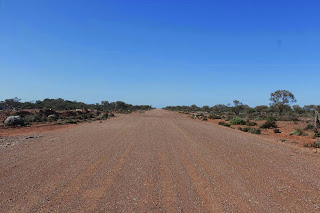Rail Gadi: Old and New Railway line.
Old Laverton Road = OLR
Site (1)
WA: 24TH Sept
One cloudy windy Windy Sunday my friend Joanna (who works for the Laverton Shire office) -- a brilliant human being and historian and an excellent guide for me. lived many years in Cambodia, She understands many layers complexity in many of the Asian countries.
she took me to a old heritage trial road trip. which is all along the old Laverton Road. It is called Golden Quest Trail Route. The New highway runs parallel to the Old laverton road- the distances between them differs from 5km to 15km
I start with Railways:
Railways as all know was a great contribution by British to many British ruled country. so here is the account of the Australian WA golden trail Railways for you.
we went along the old tracks and old platforms and old bridges - and also saw the new railway line from Malcom: and of course the salt lakes.
The Old Railway line which ended in Laverton - which i have already mentioned check:
http://archanadevitravels.blogspot.com.au/2013/09/golden-camels-laverton-wa-6th-sept-s5.html
Old Laverton Road = OLR
Site (1)
WA: 24TH Sept
One cloudy windy Windy Sunday my friend Joanna (who works for the Laverton Shire office) -- a brilliant human being and historian and an excellent guide for me. lived many years in Cambodia, She understands many layers complexity in many of the Asian countries.
she took me to a old heritage trial road trip. which is all along the old Laverton Road. It is called Golden Quest Trail Route. The New highway runs parallel to the Old laverton road- the distances between them differs from 5km to 15km
I start with Railways:
Railways as all know was a great contribution by British to many British ruled country. so here is the account of the Australian WA golden trail Railways for you.
we went along the old tracks and old platforms and old bridges - and also saw the new railway line from Malcom: and of course the salt lakes.
The Old Railway line which ended in Laverton - which i have already mentioned check:
http://archanadevitravels.blogspot.com.au/2013/09/golden-camels-laverton-wa-6th-sept-s5.html
the new railways line
The railways line
still you find these lying all around which was used to fix the timber on the railways line. I am just wondering how people dont take them such an antique value
Salt lakes









































